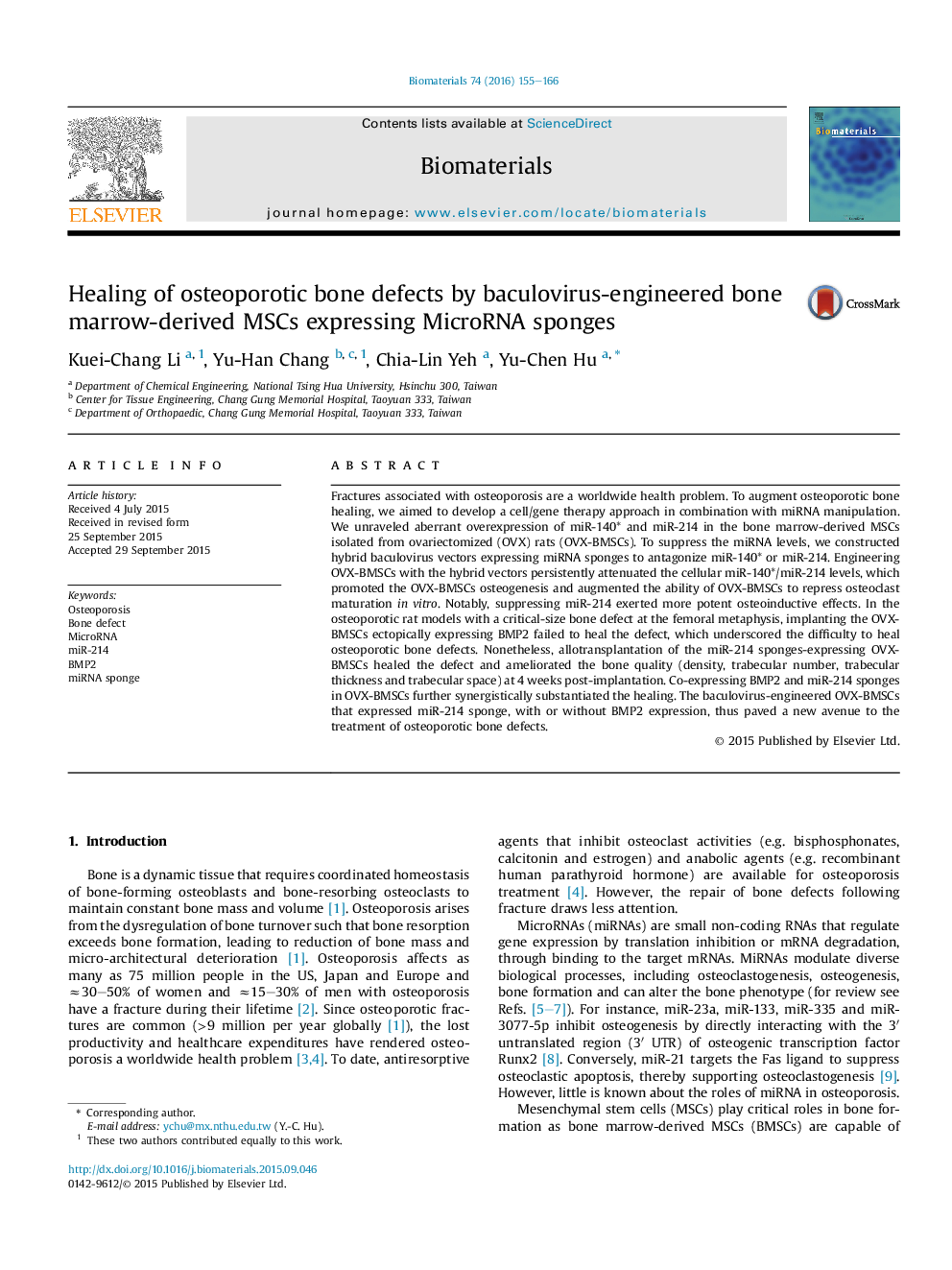| Article ID | Journal | Published Year | Pages | File Type |
|---|---|---|---|---|
| 6485361 | Biomaterials | 2016 | 12 Pages |
Abstract
Fractures associated with osteoporosis are a worldwide health problem. To augment osteoporotic bone healing, we aimed to develop a cell/gene therapy approach in combination with miRNA manipulation. We unraveled aberrant overexpression of miR-140* and miR-214 in the bone marrow-derived MSCs isolated from ovariectomized (OVX) rats (OVX-BMSCs). To suppress the miRNA levels, we constructed hybrid baculovirus vectors expressing miRNA sponges to antagonize miR-140* or miR-214. Engineering OVX-BMSCs with the hybrid vectors persistently attenuated the cellular miR-140*/miR-214 levels, which promoted the OVX-BMSCs osteogenesis and augmented the ability of OVX-BMSCs to repress osteoclast maturation in vitro. Notably, suppressing miR-214 exerted more potent osteoinductive effects. In the osteoporotic rat models with a critical-size bone defect at the femoral metaphysis, implanting the OVX-BMSCs ectopically expressing BMP2 failed to heal the defect, which underscored the difficulty to heal osteoporotic bone defects. Nonetheless, allotransplantation of the miR-214 sponges-expressing OVX-BMSCs healed the defect and ameliorated the bone quality (density, trabecular number, trabecular thickness and trabecular space) at 4 weeks post-implantation. Co-expressing BMP2 and miR-214 sponges in OVX-BMSCs further synergistically substantiated the healing. The baculovirus-engineered OVX-BMSCs that expressed miR-214 sponge, with or without BMP2 expression, thus paved a new avenue to the treatment of osteoporotic bone defects.
Related Topics
Physical Sciences and Engineering
Chemical Engineering
Bioengineering
Authors
Kuei-Chang Li, Yu-Han Chang, Chia-Lin Yeh, Yu-Chen Hu,
